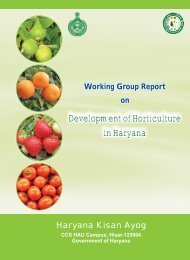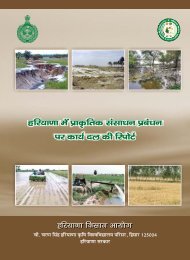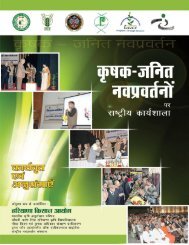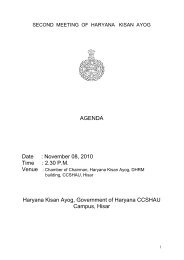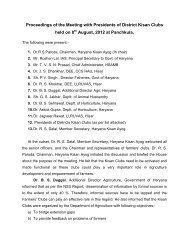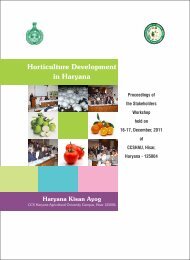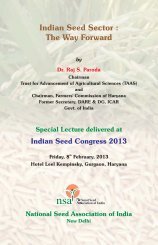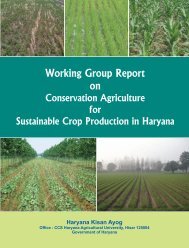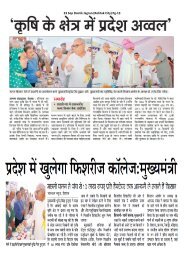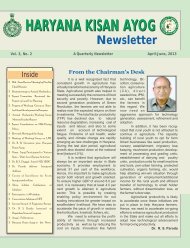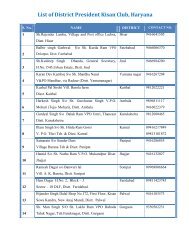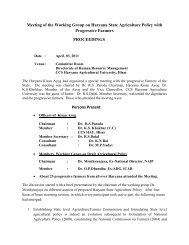Working Group Report on - Haryana Kisan Ayog
Working Group Report on - Haryana Kisan Ayog
Working Group Report on - Haryana Kisan Ayog
- No tags were found...
You also want an ePaper? Increase the reach of your titles
YUMPU automatically turns print PDFs into web optimized ePapers that Google loves.
harvest handling practices, storage, transportati<strong>on</strong> and value additi<strong>on</strong>. Thefirst processing plant, set up in private sector with NFDB assistance, is yet tofuncti<strong>on</strong> to its full capacity owing to marketing related issues.• The total fish yield can be projected to reach 1,45,250 t<strong>on</strong>nes by2017 in a scenario where <strong>on</strong>e fourth of salt affected areas and all theidentified water logged areas are brought under aquaculture. Proposedgrowth rate of fish producti<strong>on</strong> would be 10 per cent. In the sec<strong>on</strong>d scenario,assuming that the highly productive species like Pangasianod<strong>on</strong>hypophthalmus finds greater c<strong>on</strong>sumer and grower acceptance resulting inhigh productivity gains in the immediate future and <strong>on</strong> the other handc<strong>on</strong>sidering greater technological success of shrimp culture in salt affectedareas leading to positive trends in area and productivity, expected fishproducti<strong>on</strong> will be 3,50,730 t<strong>on</strong>nes by the end of XII Plan (2017-22).• For capture fisheries the focus should be restorati<strong>on</strong> of biodiversity andfisheries enhancement in the natural bodies keeping in view the supply ofquality brood stock as well as the very sustainability of fisheries. Declaring fishsanctuaries and ranching of endemic species could be some of the strategies inthis regard. Intensive cage culture would also c<strong>on</strong>tribute significantly to theoverall producti<strong>on</strong>.• Though existing regulati<strong>on</strong>s sufficiently provide for development and prohibitexploitative fishing in natural water bodies; their compliance is far fromsatisfactory. Moving towards community based management of these waterbodies with necessary policy and regulati<strong>on</strong> support can be the <strong>on</strong>ly viablel<strong>on</strong>g term opti<strong>on</strong> to avoid habitat degradati<strong>on</strong> and sustain fish producti<strong>on</strong>.• Fishers / farmers living in the periphery of these comm<strong>on</strong> property resourcesshould be the primary stakeholders in their management. Suitable locati<strong>on</strong>specific plan needs to be developed taking into account their potential for ecotourism,fish sanctuaries, sports fisheries, fish producti<strong>on</strong> potential, etc.• Community p<strong>on</strong>ds which are the major water resources for fish producti<strong>on</strong> arehighly polluted due to village garbage and domestic sewage. Awareness need( xiii )



